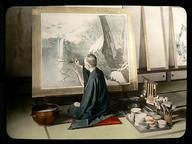Quiz Answer Key and Fun Facts
1. This enamelware uses thin copper strips to separate different colored designs, and can be found all over China. What is it called?
2. 'Ciqi' is the term for what prized Chinese artform?
3. What is the Japanese tea ceremony called?
4. 'Chedi' is the name for which of these structures in Thailand?
5. Borobudur is perhaps the most famous temple in Indonesia. In Indonesia, which of these words would be used for 'temple'?
6. The center of this religion is a gaudy but fascinating temple complex that can be found in the village of Tay Ninh, about 100 miles northwest of Saigon, in Vietnam...but which religion is this?
7. Celadon, a famous ceramic-ware of Korea, is usually characterized with a glaze of which color?
8. This flower is the symbol of the retired life of an official in China in art and poetry, and serves as the national flower of Japan.
9. Japanese Zen Buddhism is often associated with minimalist painting and sculpture, and has won the observation of Western artists like Noguchi and Tobey. Originally, however, Zen was imported from China...where it was known as...?
10. This Lao expression, meaning 'prince of the sky' refers to a great Lao prince who founded the Lan Xang empire, a modern Thai novel about Hmong rebels fighting in the Korean war and a style of upswept roofs found in Lao temples...but what is it called?
Source: Author
thejazzkickazz
This quiz was reviewed by our editing team before going online.
Any errors found in FunTrivia content are routinely corrected through our feedback system.
